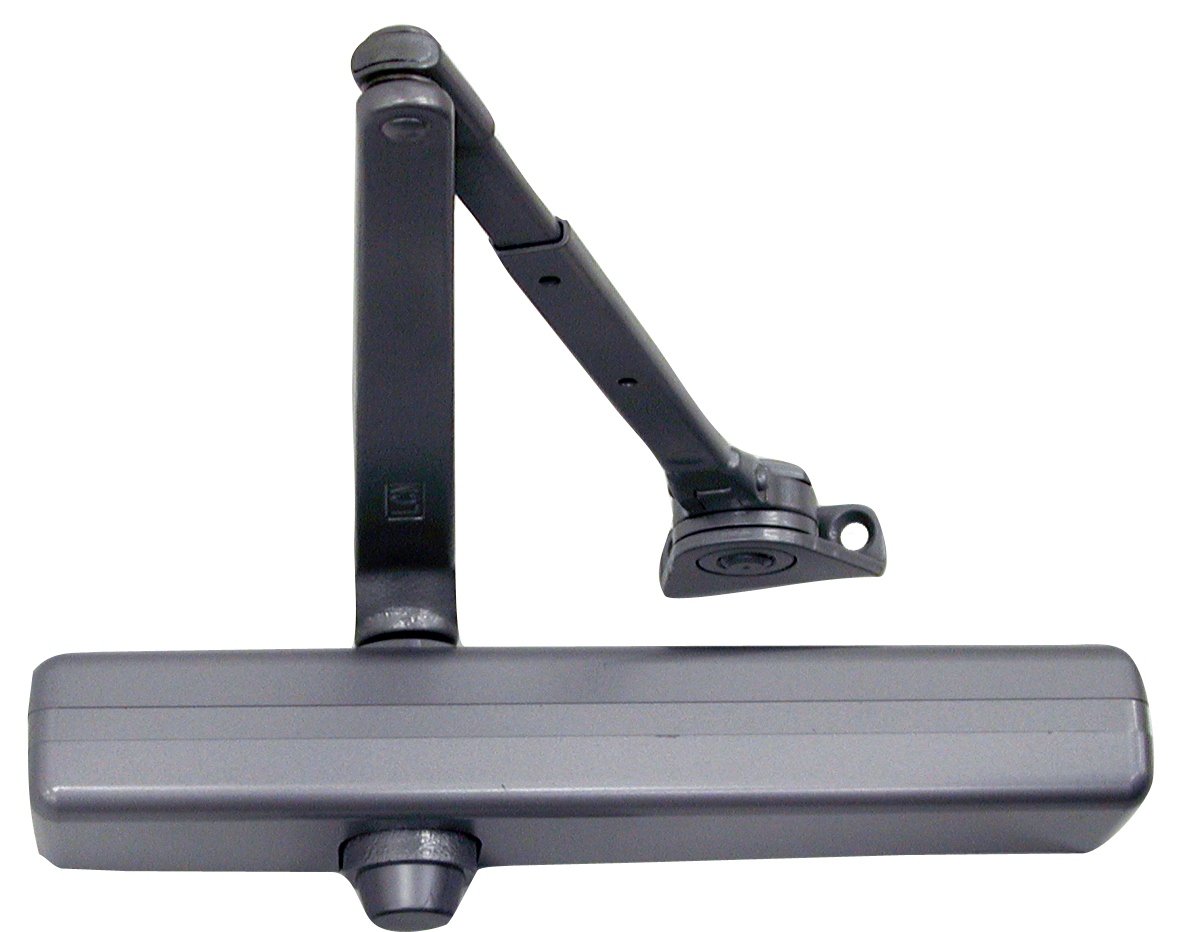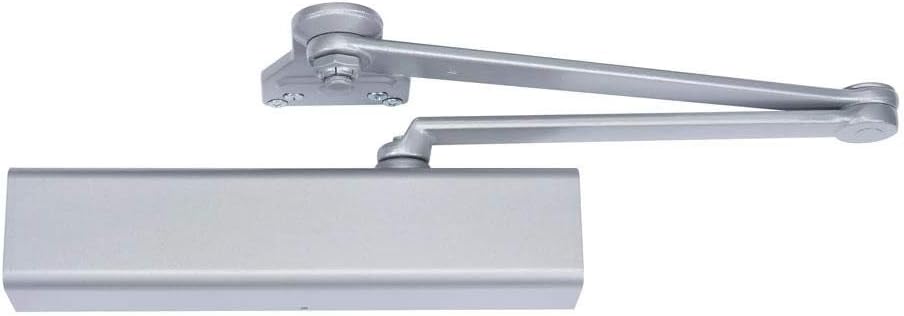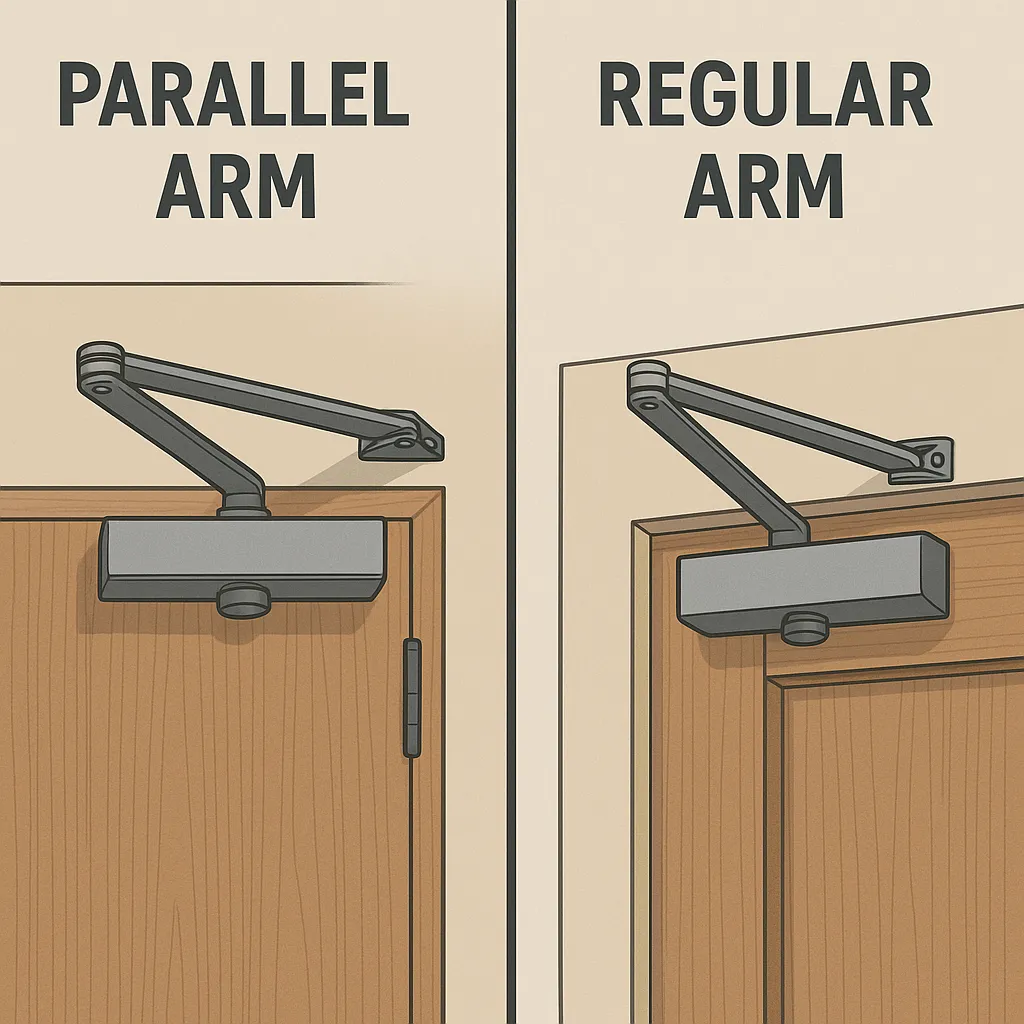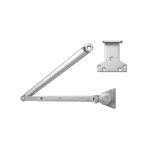Which One’s the Vibe for Your Space?
Let’s talk about something that’s probably not on your daily radar but totally affects your everyday life: door closers. Specifically, we’re diving into the epic showdown of parallel arm vs. regular arm door closers. These unsung heroes keep doors from flying open like a scene from a bad action movie, but they’re not all created equal. So, grab a coffee, get comfy, and let’s break down the differences, implications, and some sneaky insights to help you pick the right one for your space.
What’s a Door Closer, Anyway?
Before we get into the nitty-gritty, let’s set the stage. A door closer is that nifty device that makes sure your door closes smoothly and securely after you walk through. No slamming, no awkward gaps, just pure functionality. They’re super common in commercial spaces like offices, schools, and hospitals, but you’ll also find them in fancy residential setups. The two big players in the surface-mounted closer game are regular arm and parallel arm closers. Each has its own vibe, and choosing the right one depends on your door’s setup, traffic, and aesthetic goals.
The Contenders: Regular Arm vs. Parallel Arm
Let’s meet our two stars. Think of regular arm and parallel arm closers as cousins with different personalities. They both get the job done, but their approach? Totally different.
Regular Arm: The Classic Powerhouse

Regular arm closers are the OGs of the door closer world. They’re typically mounted on the pull side of the door (the side you pull to open). The closer body sits on the door itself, and the arm extends to the frame’s head, sticking out like a proud peacock. This setup is straightforward and packs a punch when it comes to closing force.
Why? It’s all about leverage. The arm’s perpendicular position to the door gives it max power, making it ideal for heavy doors or places where wind or frequent use demands a strong close. Think exterior doors or high-traffic spots like a busy office entrance. Regular arms can usually swing a door open to a full 180 degrees, which is great for accessibility.
But here’s the catch: that arm sticks out like a sore thumb when the door’s closed. If aesthetics are your thing, or if you’re worried about someone yanking on the arm in a high-traffic area (looking at you, school hallways), this might not be your jam. Plus, regular arms don’t play nice with extra features—think hold-open functions or built-in stops. You can sometimes add a friction hold-open arm, but options are limited compared to their parallel cousins.
Parallel Arm: The Sleek Operator

Now, let’s talk about the parallel arm closer, the cooler, more discreet sibling. These are mounted on the push side of the door (the side you push to open). The closer body goes on the door, and the arm attaches to the frame’s soffit (that’s the underside of the frame’s top part, for the uninitiated). When the door’s closed, the arm folds neatly parallel to the door, giving it a low-profile, almost ninja-like vibe.
This setup is a favorite in places where looks matter, like sleek office lobbies or upscale retail spaces. The parallel arm’s design makes it less prone to vandalism—good luck grabbing an arm that’s flush with the door! It’s also a go-to for high-traffic areas like schools because it’s less likely to get bashed around. And here’s the kicker: parallel arms come with a ton of customization options. Want a hold-open function with a thumbturn or a built-in stop to keep the door from swinging too far? Parallel’s got you covered.
The downside? Parallel arms sacrifice a bit of closing power—about 25-30% less than regular arms, according to industry insights. The arm’s positioning reduces leverage, so they’re not the best for super heavy doors or windy conditions. But for most applications, they still get the job done with style.
Head-to-Head: A Comparison Table
To make things crystal clear, let’s put these two in a ring and see how they stack up. Here’s a quick comparison to help you visualize the differences:
| Feature | Regular Arm | Parallel Arm |
|---|---|---|
| Mounting Side | Pull side (hinge side) | Push side (stop side) |
| Aesthetic | Arm sticks out perpendicularly, more noticeable | Arm folds parallel to door, sleeker and less intrusive |
| Closing Power | Stronger, ideal for heavy doors or high wind | 25-30% less powerful, better for lighter doors |
| Customization Options | Limited (friction hold-open available) | Extensive (hold-open, dead stops, spring stops, heavy-duty arms) |
| Durability in Traffic | More prone to damage in high-traffic areas | More durable, less likely to be tampered with |
| Max Door Swing | Up to 180° | Up to 180° |
| Best Use Case | Exterior doors, heavy doors, less public areas | High-traffic areas, aesthetic-conscious spaces, schools |
| Installation Considerations | Needs sufficient top rail width; may require mounting plate | Needs sufficient top rail width; may need drop plate for narrow rails |
This table should give you a quick snapshot of what each closer brings to the table. But let’s dive deeper into the implications and why these differences matter.
Why It Matters: Implications of Your Choice
Choosing between a regular arm and a parallel arm closer isn’t just about picking a mechanism—it’s about matching the closer to your space’s vibe, function, and durability needs. Let’s break down the key implications.
1. Aesthetics: How’s It Gonna Look?
If your space is all about that clean, modern aesthetic (think glass-walled offices or boutique hotels), a parallel arm closer is your best bet. Its low-profile design blends into the door, making it less of an eyesore. Regular arms, on the other hand, are like that loud uncle at a family reunion—functional, but they demand attention with that protruding arm. If you’re installing in a less public area, like the back entrance of a warehouse, the regular arm’s look might not bother you.
2. Durability: Can It Take a Beating?
High-traffic spots like schools, malls, or hospitals need closers that can handle the chaos. Parallel arms shine here. Their tucked-in design means they’re less likely to get yanked, bent, or otherwise abused by rowdy kids or hurried shoppers. Regular arms, sticking out like a sore thumb, are more vulnerable. A study from Beacon notes that parallel arms are a go-to for schools precisely because they’re harder to mess with.
3. Power: Can It Handle the Heavy Stuff?
Got a massive fire-rated door or an exterior entrance that’s constantly battling the wind? Regular arms have the upper hand. Their design gives them more leverage, making them the muscle car of door closers. Parallel arms, while still effective, might struggle with super heavy doors or extreme conditions. If you’re dealing with a lighter interior door, though, the parallel arm’s slightly reduced power won’t be an issue.
4. Customization: Do You Need Extras?
Parallel arms are like the Swiss Army knife of closers. Need a dead stop to keep the door from slamming into a wall? Want a hold-open feature for a fire door (with smoke-activated release, of course)? Parallel arms offer way more options. Regular arms are more like a basic flip phone—great at what they do, but don’t expect a ton of bells and whistles.
5. Code Compliance: Staying Legal
Both closers can meet building codes, but there are nuances. For fire doors, you’ll need to ensure any hold-open features comply with regulations (e.g., smoke-activated release for fire safety). Parallel arms often have more options for these features, making them easier to spec for code-compliant installations. Regular arms can work too, but you might need additional hardware to meet the same requirements.
Sneaky Insights: What the Pros Know
Alright, let’s get a little cheeky and spill some insider tips that’ll make you sound like a door closer pro at your next hardware store run.
- Power Loss at 180°? Yeah, It’s a Thing. If you’re swinging your door open to a full 180 degrees, both closers can handle it, but parallel arms lose a bit more closing power at that angle. Pros like Bryan McKeehan point out that parallel arms drop about one power size (e.g., a size 4 closer acts like a size 3). If you need max power, you might need to upsize your parallel arm closer or stick with a regular arm.
- Drop Plates Are Your Friend. Got a door with a narrow top rail? Both closers might need a drop plate to make the installation work. Parallel arms often need them more because of their push-side mounting, so double-check your door’s specs before buying.
- Vandalism Is Real. If you’re installing in a school or public space, go parallel. Regular arms are like catnip for kids who love to swing on things. A parallel arm’s design keeps it out of harm’s way.
- Mix and Match? Maybe. Some closers, like the LCN 4040XP, come with a “tri-pack” option, meaning you get a regular arm with a parallel arm shoe. This lets you switch between regular and parallel mounting without buying a whole new closer. Handy if you’re not sure what you need yet.
Making the Choice: What’s Your Door’s Vibe?
So, how do you decide? It comes down to three big questions:
- Where’s the door, and who’s using it? If it’s an exterior or heavy door in a low-traffic spot, go regular arm for max power. If it’s a high-traffic interior door or a place where looks matter, parallel arm’s your guy.
- What’s the aesthetic goal? If you want a sleek, modern look, parallel arms win hands-down. If function trumps form, regular arms are fine.
- Do you need extra features? If you want stops, hold-opens, or heavy-duty arms, parallel closers offer more flexibility.
Wrapping It Up: Close the Door on Confusion
Alright, let’s close this out (see what I did there?). Regular arm and parallel arm closers both have their place in the world of doors. Regular arms are the brawny, no-nonsense option for heavy-duty jobs, while parallel arms bring style, durability, and customization to the table. Your choice depends on your door’s needs, your space’s vibe, and how much you care about that arm sticking out like a sore thumb.
Next time you’re walking through a door that closes smoothly behind you, give a little nod to the closer doing the heavy lifting. And if you’re speccing out a new project, use this guide to pick the right one. Got questions? Hit up the pros or drop a comment below—let’s keep the door convo swinging!


